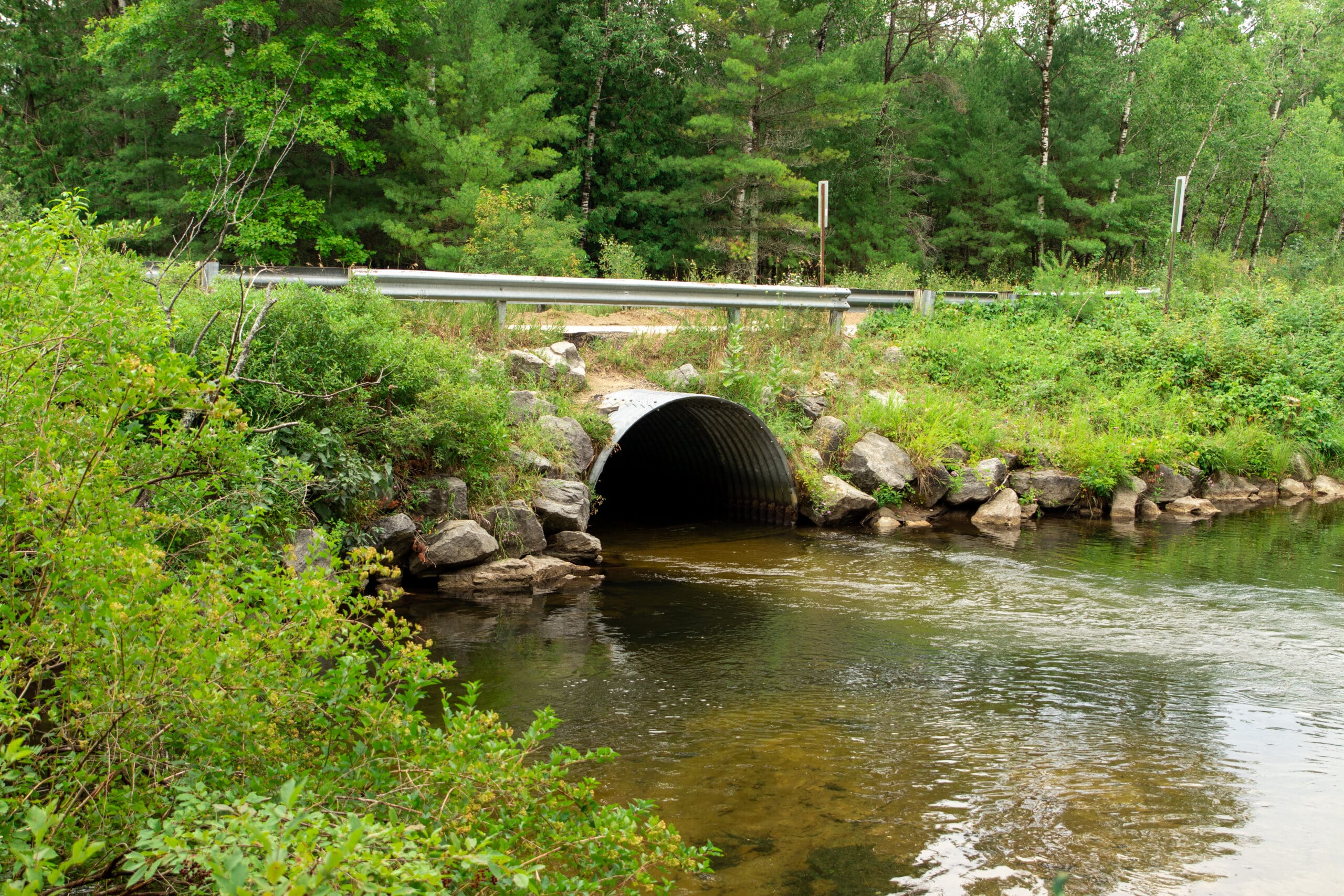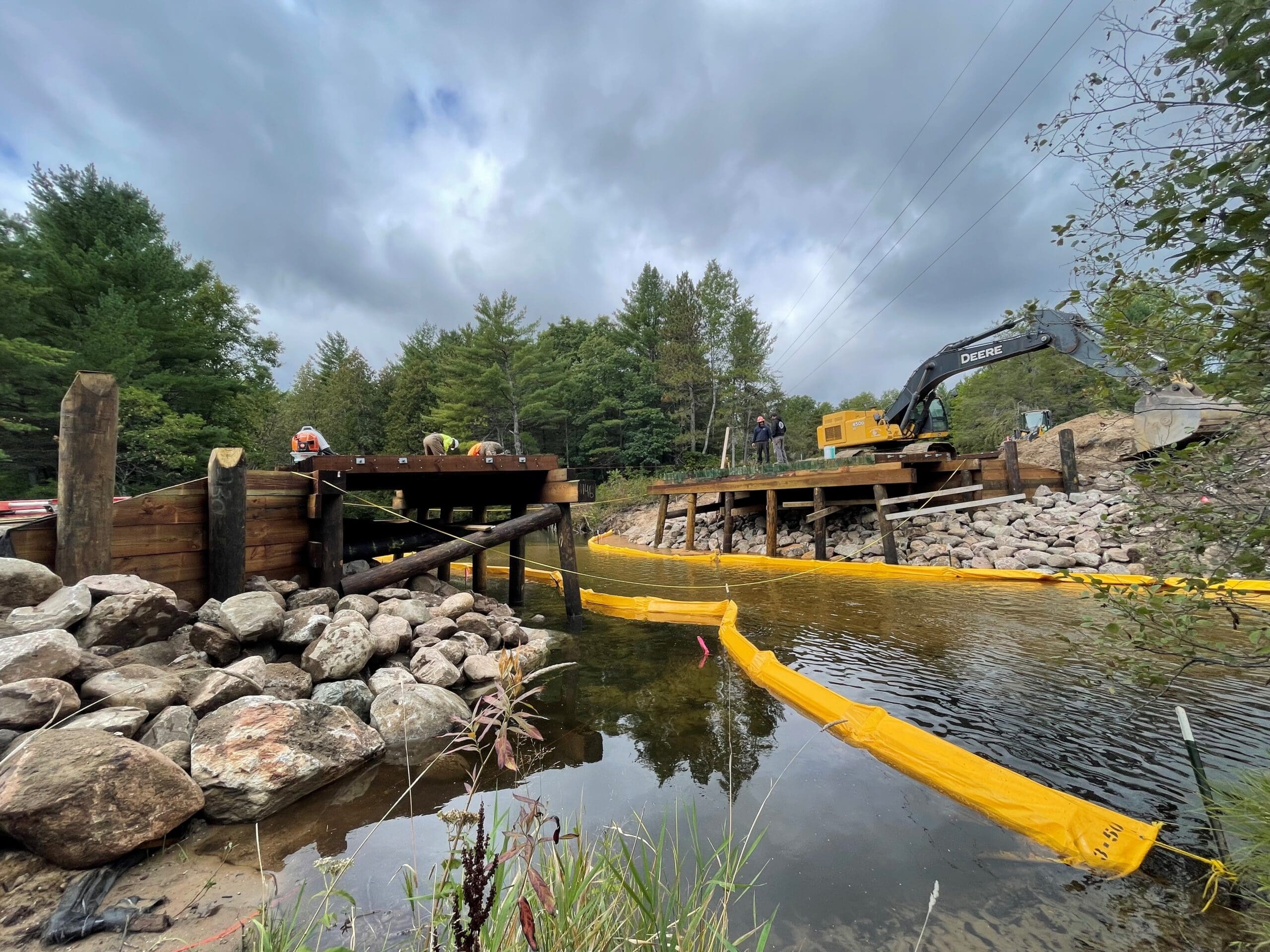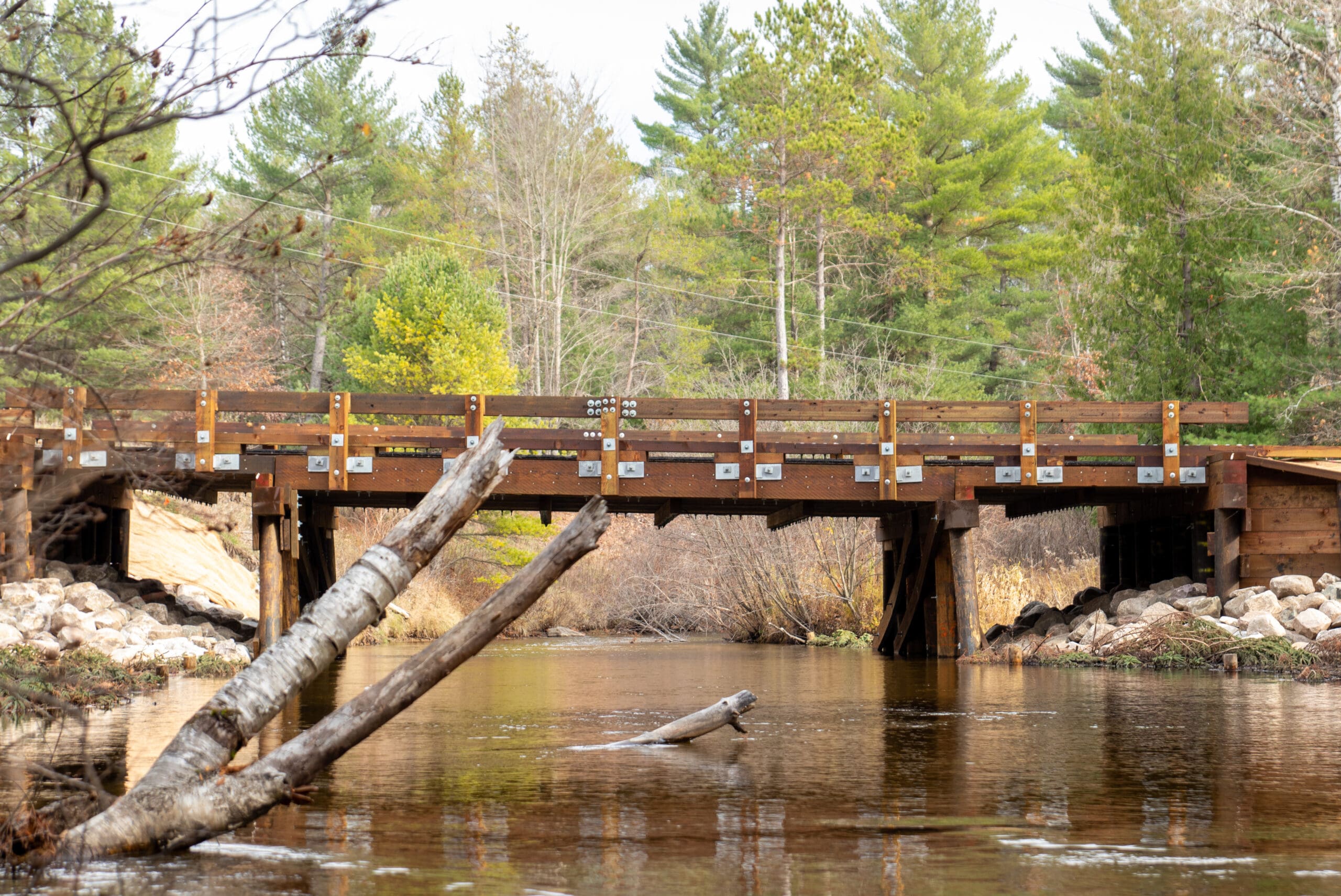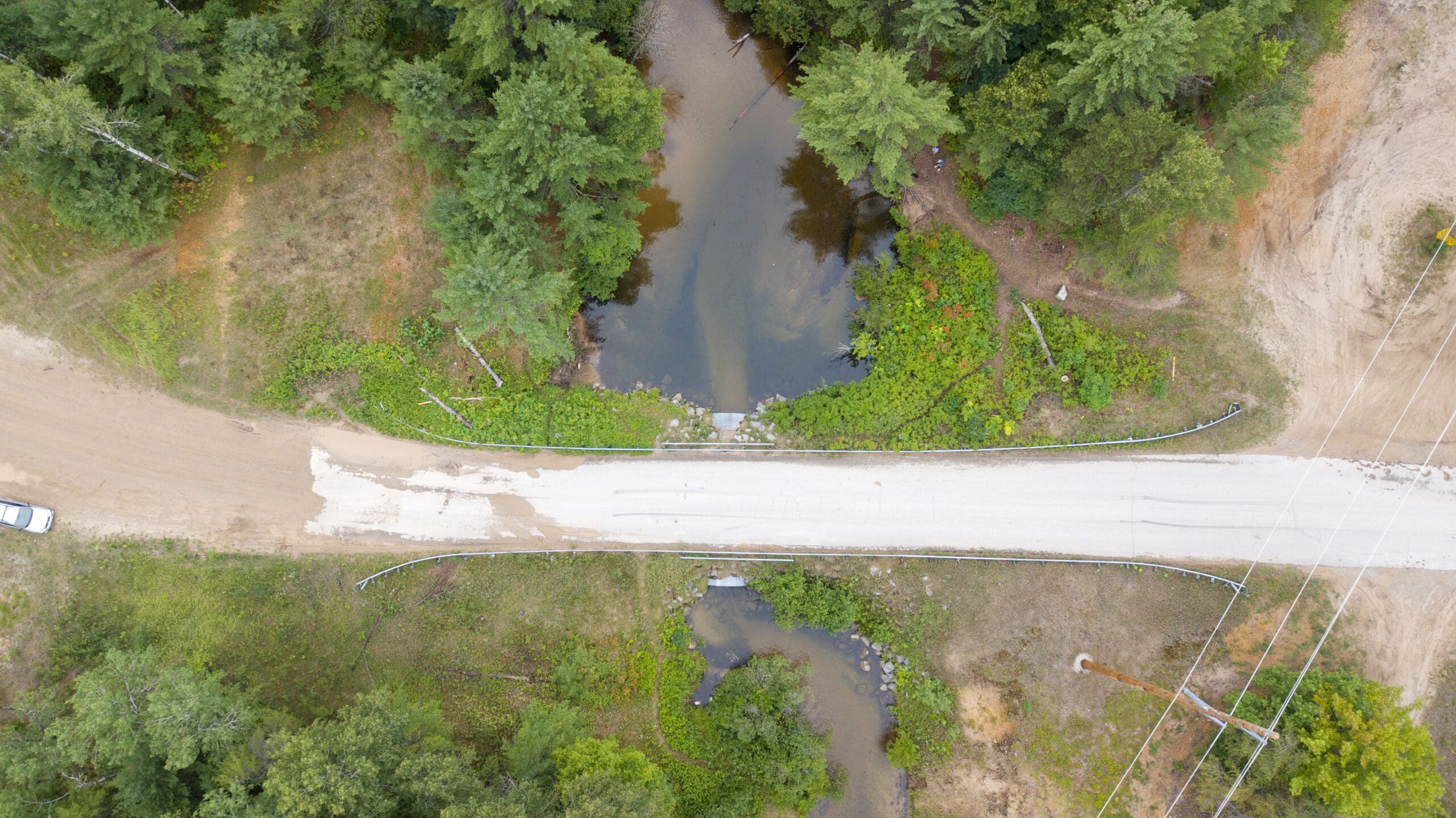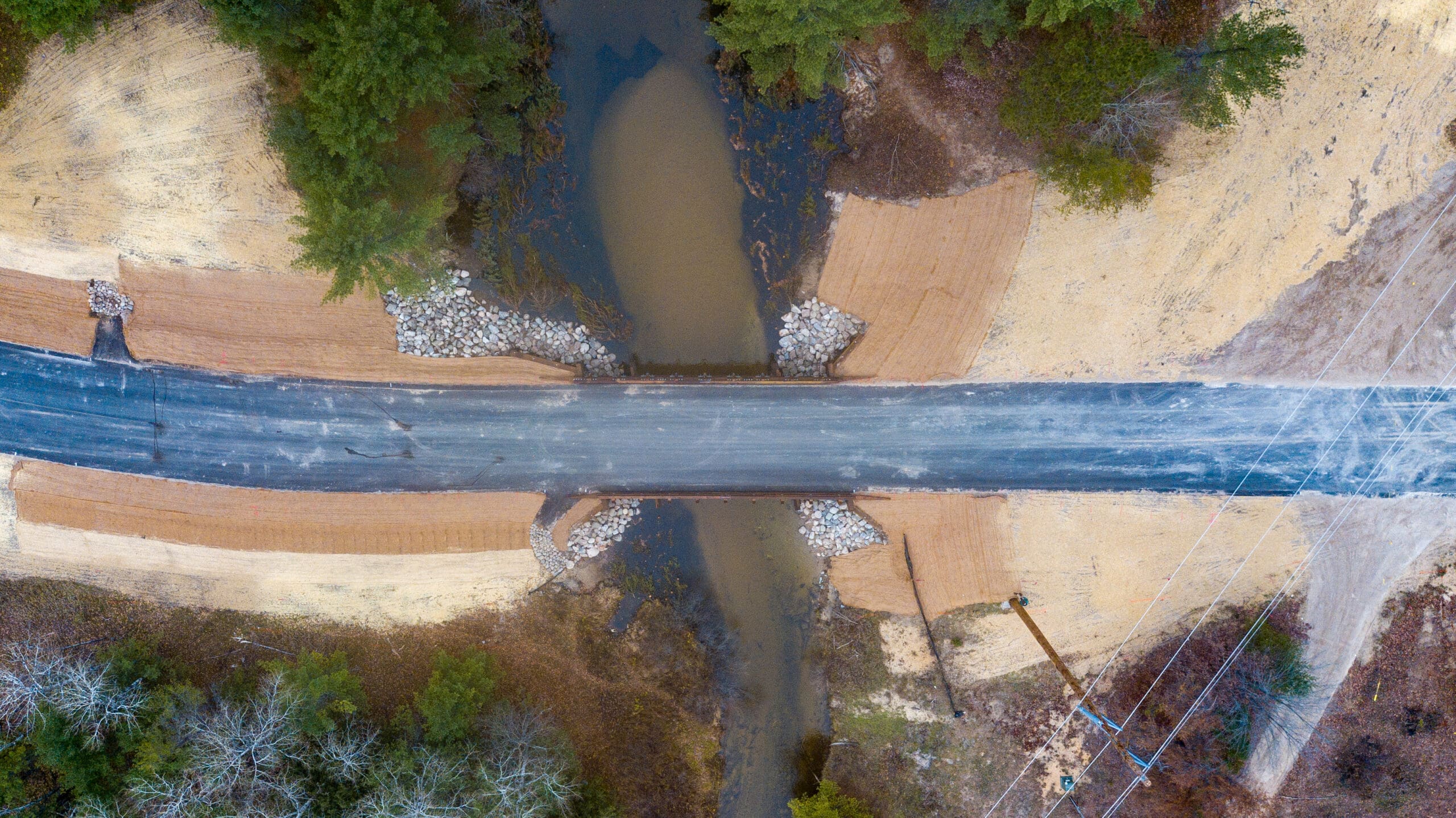New Timber Bridge Frees Up Miles of the Ottaway (Boardman) River
Project Highlights
Project Type
Stream Crossing Replacement
River Miles Improved
32.5
Location of Project
Whitewater Township, Grand Traverse County 44°41’24.04″N, 85°22’1.79”W
Wildlife Benefited
Cold water fish and some migratory warm water species, semi-aquatic reptiles and amphibians, cold water aquatic macro-invertebrates
Project Overview
Nestled upstream from the Brown Bridge Quiet Area lies one of Michigan’s hidden wild places. The meandering north branch of the Ottaway (Boardman) River carves through tall pines in the angelic wilderness and now- flows freely.
What used to consist of a narrow river-restricting culvert (1/3 of the river’s natural width), the crossing at Broomhead Road recently underwent a dramatic transformation. In the fall of 2022, construction wrapped on a multi-year project to replace that culvert with a channel-spanning timber bridge.
The beautiful bridge mimics the environment around it, blending seamlessly with the natural tones of native trees and shrubs. Numerous entities joined forces to ensure success, including project leaders from CRA, other nonprofits, the local road commission, and state, federal and tribal government agencies. What now culminates years of hard work, planning, collaborating, and fundraising, the crossing serves as a symbol of achievement for the project management collective.
The bridge opens 30 miles of habitat in the river’s upper reaches for an array of aquatic species, including the many brook trout in this section of the river. In addition, 450 square yards of tree revetments were placed, which will accumulate sediment over time and create a high-quality streamside wetland habitat.
Many river species prefer cold water, and returning the river to its natural width increases velocity preventing unnatural warming in the over-widened section. The Ottaway River’s north branch restoration makes it a prime location for anglers seeking a tranquil experience and revitalizes a peaceful and wild environment- as nature intended.
The aerial shot shows the severely restricted north branch before the culvert was removed. The Ottaway at this section is about 3 times the width of the old culvert.
Projects like this are not possible without the help of our funders and partners.
We’d like to send a special thank you to:
Funders:
USDA—Natural Resources Conservation Service—Regional Conservation Partnership Program, The Brookby Foundation, Grand Traverse Band of Ottawa and Chippewa Indians, Bureau of Indian Affairs—Great Lakes Restoration Initiative—Distinct Tribal Program, US Fish & Wildlife Service—National Fish Passage Program and Great Lakes Fish & Wildlife Restoration Act, US Environmental Protection Agency—Great Lakes Restoration Initiative, Michigan Department of Natural Resources—Fishery Habitat Grant Program, Great Lakes Fishery Trust—Ecosystem Health and Sustainable Fish Populations Habitat Protection and Restoration Program, National Fish and Wildlife Foundation—Sustain Our Great Lakes Program, Grand Traverse County Road Commission, Oleson Foundation, Trout and Salmon Foundation, DTE Energy Foundation, Walters Family Foundation, Andrew R. and Janet F. Miller Foundation, The George Fund
Partners Involved:
Conservation Resource Alliance; Grand Traverse County Road Commission; Grand Traverse Band of Ottawa & Chippewa Indians; Natural Resources Conservation Service; The Watershed Center Grand Traverse Bay, Adams Chapter of Trout Unlimited, KPM Engineering (Design engineer), Krenn Timber Bridge Inc., AJ’s Excavating (Prime Contractor), Adams Marine

